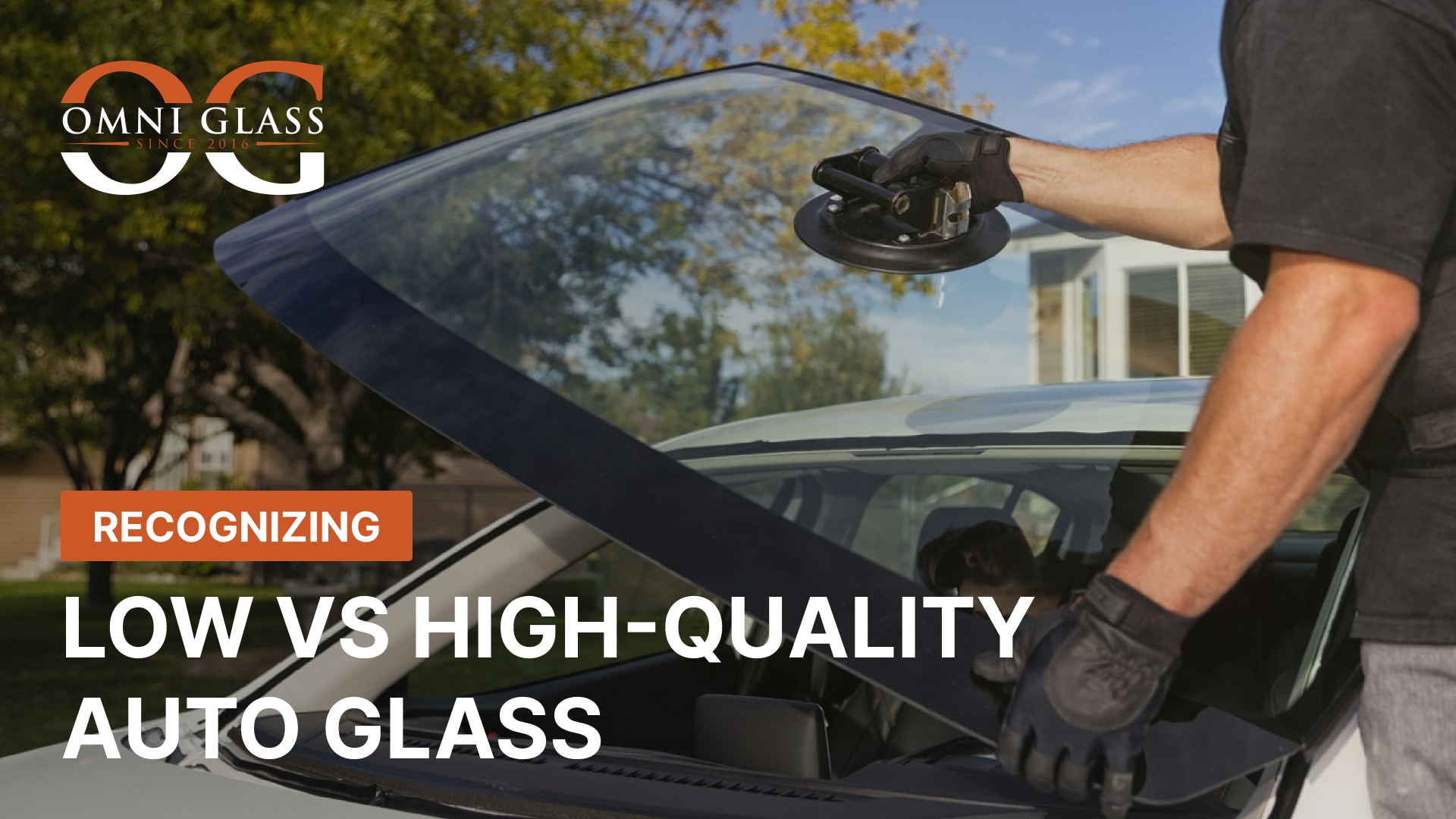Auto glass quality can have a significant impact on your vehicle’s safety, visibility, and overall durability. With a range of options on the market, understanding the difference between high-quality OEM (Original Equipment Manufacturer) glass and other options like aftermarket glass can help you make an informed choice. Here’s a breakdown from auto glass experts of what defines high vs. low-quality auto glass and why it matters.
What Defines High-Quality Auto Glass?
High-quality auto glass is characterized by strict adherence to the specifications and standards set by the vehicle’s manufacturer. Here’s what to look for:
- OEM Standards: OEM glass is designed and manufactured by the original vehicle maker or a certified partner, meeting precise specifications for fit, durability, and clarity. This glass often comes with a warranty and provides optimal performance for vehicles equipped with advanced driver assistance systems (ADAS)
- Safety Certifications: All auto glass in the U.S. must meet Department of Transportation (DOT) safety standards, though OEM glass is often tested to even higher benchmarks to ensure better impact resistance and shatter protection.
- Optical Clarity: High-quality glass offers better clarity and visibility. Low-quality glass can have defects like distortions or color tinting, which may impede visibility and cause driver fatigue.
Signs of Low-Quality Auto Glass
While budget-friendly, low-quality auto glass often lacks the durability and reliability of OEM glass. Key indicators include:
- Distortions or Imperfections: Poorly manufactured glass may have visual distortions, which can become noticeable in different lighting conditions, affecting visibility.
- Lower Resistance to Impact: Lower-grade glass may crack or shatter more easily, which can compromise safety during collisions.
- No Warranty: Low-quality aftermarket glass may not offer a warranty, and fitting or performance issues may arise when it is used to replace OEM glass.
- Incompatibility with ADAS: Many modern cars have ADAS, which relies on specific windshield positioning and clarity for features like lane assistance. Low-quality or poorly fitting aftermarket glass may not align with these systems.
OEM vs. Aftermarket Auto Glass: Key Differences
- OEM Glass: This glass is identical to the factory-installed windshield and ensures a perfect fit and optimal safety performance. It’s often recommended for newer or high-end vehicles and comes with a warranty.
- Aftermarket Glass: While generally safe and DOT-certified, aftermarket glass may vary in quality, thickness, and fit. It can be a cost-effective option for older vehicles or those without complex ADAS features, but it may lack the precision of OEM glass.
Why Quality Matters for Safety and Cost
High-quality auto glass not only enhances visibility and durability but also supports the structural integrity of the vehicle, especially in the event of an accident. Investing in quality glass ensures a safer, longer-lasting solution, often offsetting future repair costs. Additionally, OEM glass can positively impact resale value, making it an appealing option for those planning to sell their vehicle in the future.
Simple Tests to Spot Quality
Here are a few ways to assess glass quality:
- Distortion Check: Look at the glass from different angles to see if there are any waves or distortions. High-quality glass will appear consistent.
- Impact Sound: Tap the glass lightly. Low-quality glass often sounds hollow compared to the denser feel of high-quality glass.
- DOT Label: Look for a DOT stamp, which certifies that the glass meets minimum safety standards required by law.
Invest in Safety with the Right Auto Glass
Choosing the right auto glass is a vital investment in your vehicle’s safety and performance. At Omni Auto Glass, our professionals can help you assess your current glass and recommend a high-quality replacement if needed. Reach out to us today to ensure your vehicle is fitted with the best possible protection.
Back to top: Recognizing Low vs. High-Quality Auto Glass




